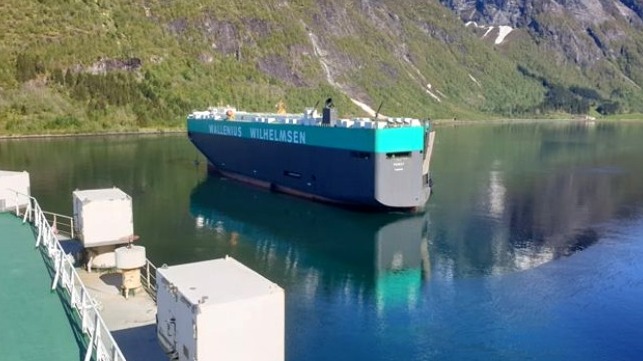Wallenius Wilhelmsen Will Restart Vessels Laid-Up in 2020

As a possible sign of improvement in the ro-ro transportation market, Norway’s Wallenius Wilhelmsen announced plans to reactivate vessels the company had laid-up in mid-2020 in response to the impact of the pandemic on global trade.
Citing reduced capacity and rising rates in the charter market, Wallenius Wilhelmsen said they have decided to bring up to nine vessels back into service out of a total of 16 the line had placed into cold lay-up. Plans are in place to reactivate these vessels during the first quarter of the year, the company said, to replace capacity currently sourced through short-term charters.
“Flexibility in the fleet has been a core strategic choice since the inception of Wallenius Wilhelmsen, ensuring our ability to adjust the fleet to our needs and shifting market demand,” said Craig Jasienski, CEO of Wallenius Wilhelmsen.
Citing overcapacity in its fleet, Wallenius Wilhelmsen in 2020 reduced capacity and lower costs. This initially included placing seven ships into cold lay-up in Norway and three additional vessels in Malaysia. In June 2020, the line said it was also evaluating whether an additional 10 vessels could be laid up and later decided to lay-up six additional vessels.
In addition to the vessels that were placed into lay-up, they also recycled four older ships and redelivered seven vessels operating under charter to their owners. It was the first time in 12 years, since the 2008 global financial crisis, that the company had placed vessels into cold lay-up. In total, they were operating 123 ro-ro vessels transporting vehicles before the onset of the pandemic.
Previously they had said it would require three to four weeks to restart a vessel that is in cold laid-up. The exact steps vary depending on the vessel type and how long it has been out of action. Saying that the ships, which had had no crew living aboard during the lay-up period, needed to be prepared for people to live onboard it again, requires procuring stores for the crew such as food and fresh water. The freezers, cold rooms, and lighting have to be started up and then they would turn to the equipment on the bridge, in the engine room, and cargo hold in the restart process.
The company cautioned that the pandemic continues to impact the markets, but based on the conditions in the charter market felt the restart was the most effective step for the business to continue to meet customer needs. Also, they noted that later this year the line will also be taking delivery of the fourth and final newbuild in its HERO series.
